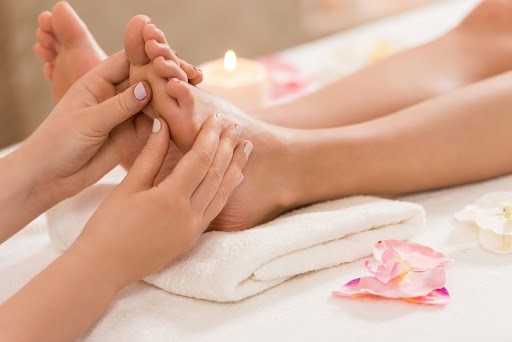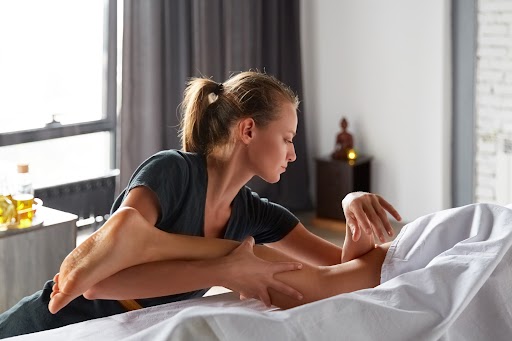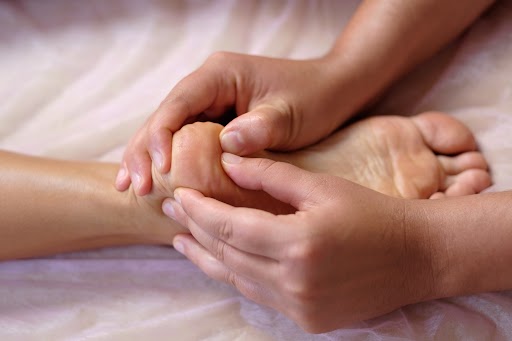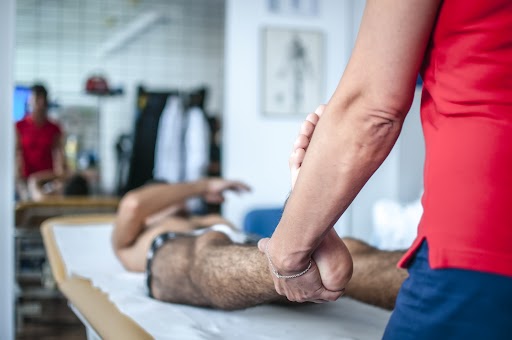All you need to know about foot reflexology
A reflexology massage, or feet acupressure, works by applying pressure to certain places on the feet, hands, and ears. This method of analyzing body parts is based on the notion that certain organs and systems have connections. The practitioners of this technique are known as reflexologists.
It is believed that applying pressure to these parts can offer a variety of health benefits.
Using reflexology to treat a condition along with other treatments may bring benefits, but you should always consult your doctor before beginning any new treatment. Though reflexology has been used in many countries for thousands of years, its effectiveness remained unproven due to a scarcity of scientific evidence. However, recent studies have demonstrated the effectiveness of feet therapy.
Getting some massage-like attention to your feet with foot reflexology may be a relaxing and soothing way to unwind.

What are the principles of reflexology?
It is believed that reflexology works according to several different theories.

Chinese traditional medicine
The ancient Chinese believed in qi (pronounced “chee”) as “vital energy”, and that qi flows through each individual. Stress blocks the flow of qi in a person’s body. In turn, this may cause an imbalance within the body, which can lead to illness. Reflexology is aimed at maintaining the body’s balance, avoiding disease, and keeping the qi flowing. A different part of the body corresponds to a different pressure point on the body in Chinese medicine. There are reflexology maps for feet, hands, and ears that help reflexologists determine where pressure should be applied. They believe that their touch allows energy to flow through the body until it reaches the part that needs healing.
Other theories on reflexology

Scientists in the 1890s discovered that nerves run between the skin and the internal organs. Several studies have found that, ultimately, the entire body’s nervous system adjusts to outside factors, including touch. Similar to any kind of massage, reflexology can help calm the nervous system and promote relaxation. Alternatively, some believe that pain is the subjective result of the brain. Pain can sometimes cause the brain to react. Other times, however, it can trigger pain because of emotional or mental distress.
A person’s mood and stress can be improved by reflexology if the body is calmed, which could, in return, improve their mood. Other people believe in zone theory as an explanation for how reflexology works. The theory suggests that the human body consists of 10 vertical zones. The zones contain different body parts and correspond to different fingers and toes. Zone theory followers believe that they can reach any part of the body by touching these fingers and toes.
Foot reflexology vs regular massage
The main difference between foot reflexology and foot massage is that foot reflexology targets specific nerve points to heal the body. In contrast, foot massage is more of a feeling-good massage. Therefore, getting a foot massage is excellent for reducing muscle soreness, but the effects are short-term and do not solve long-term chronic problems.
Also read- Benefits of a full body massage.
Benefits of foot reflexology
Managing stress and relaxing

A key benefit of reflexology is its ability to promote relaxation and stress reduction. Various acupressure footpoints must be pressed in order to achieve this. Through reflexology, blood flow is increased in the body, reducing stress and anxiety and lowering blood pressure. Relaxation is easy to achieve when you are less stressed and anxious.
Reflexology seems to have the potential to reduce stress and induce relaxation, according to a study published in 2015. Moreover, the study found that stress associated with repetitive lifestyles can be reduced by restoring the body’s natural balance. Consider multiple sessions if you want to use reflexology for stress management or relaxation. Multiple sessions are recommended for optimal benefits, as one session may interrupt the stressed response.
Enhances nerve system stimulation
There are many ways in which open neural pathways benefit the central nervous system. This enables the brain to handle inputs more effectively, essentially increasing cognitive strength. It also increases physical reaction times, which aids memory. With overall faster and more efficient brain function, the entire entity becomes more efficient.
Relieves headaches and migraines

People who suffer from migraines and headaches often turn to reflexology to ease their pain since reflexology increases blood flow and reduces muscle tension. Stress and psychological factors can also cause migraine headaches, particularly if they manifest themselves as stress-induced symptoms.
Revitalizes Nerve Function
We age and lose the sensitivity of nerves in different parts of our bodies. Mostly we lose this sensitivity in our extremities. A reflexology session stimulates over 7,000 nerve endings, causing increased nerve function. Through the opening and cleansing of neural pathways, the body’s function is improved, and toxicity is reduced.
Improves Circulation
There is no doubt that reflexology has one of the best known and most verified results: improved circulation throughout the entire body. This means more oxygen and blood is circulated more efficiently through the body. The oxygen that reaches vital organ systems optimizes their function and increases metabolism because of this benefit.
Boosts energy levels
The coordination of organ and muscle functions can improve metabolic rate and energy production with reflexology massage. Essentially, reflexology sessions are intended to energize the body and mind.
Reduces the pain of plantar fasciitis
A reflexologist can help patients with plantar fasciitis relieve their pain and discomfort. A reflexology treatment helps ease plantar fasciitis heel pain by applying pressure to pressure points to release tension. A professional foot massage is an effective natural remedy for plantar fasciitis.
The process of reflexology
It may take an hour or more to perform a reflexology session. Before getting started with the treatment, the practitioner will likely ask what types of aches, pains, or problems you’re experiencing. Initially, the foot reflexology session feels a lot like a foot massage, although it is more targeted to specific foot massage pressure points. They will apply pressure to different parts of the foot using their hands or small massage balls.

Book the salon services from Yes Madam and enjoy the benefits of various kinds of massage from the comfort of your own home!




Recent Comments